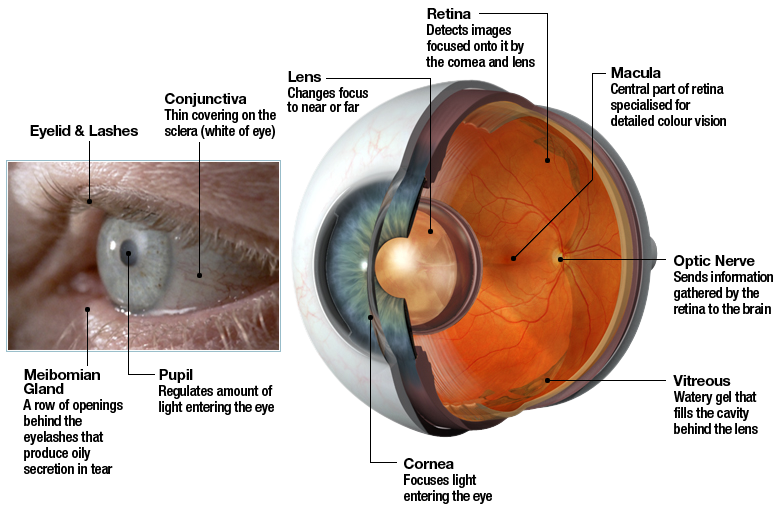The human eye works like a camera. At the front is the cornea and lens. At the back is the retina where the image is detected and sent to the brain via the optic nerve. The central part of the retina is called the macula.

The human eye works like a camera. At the front is the cornea and lens. They focus the images we see on the retina at the back of the eye. The retina detects the image, like the film in a camera, and sends the information to the brain via the optic nerve. The central part of the retina is called the macula. The macula is specialised for detailed central vision, such as reading, driving and recognising faces. The rest of the retina allows us to see a wide field of view, but it cannot provide sharp vision. If the macula is damaged, the vision will be blurred even though the peripheral vision remains intact.
Despite the human eye only being small, it is one of the most important organs of the body. There are many working parts, each playing a complex role in our ability to see.
Conditions of the eye require timely and accurate diagnosis combined with comprehensive treatment and management. Your GP or Optometrist can advise you when a consultation is necessary with an eye specialist (Ophthalmologist). If you notice a sudden change in your vision it is important you seek an appointment with us as soon as possible.
